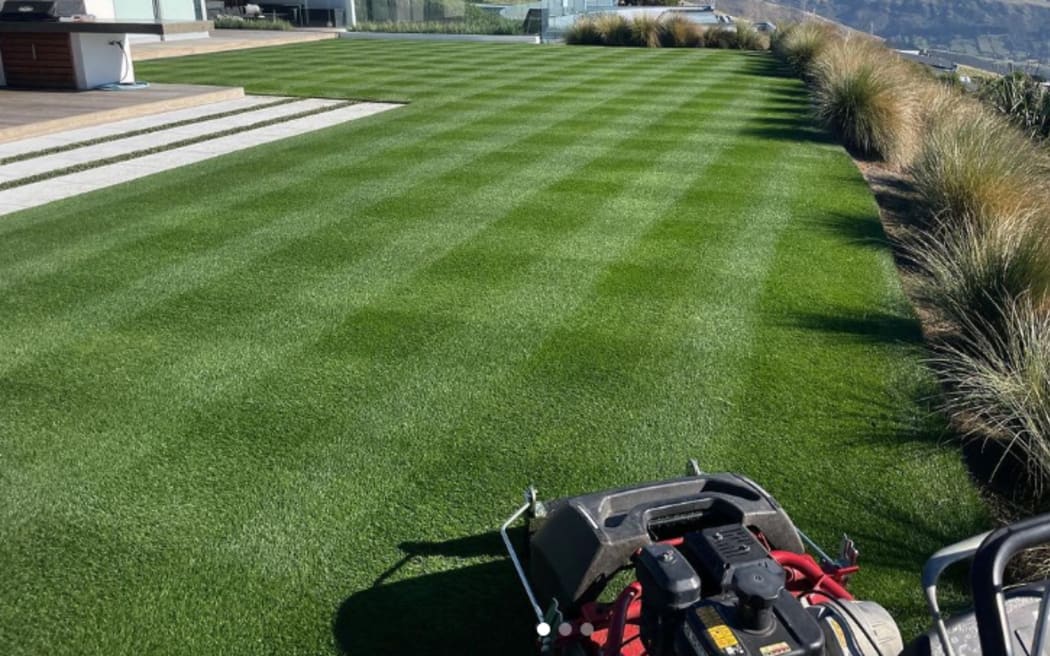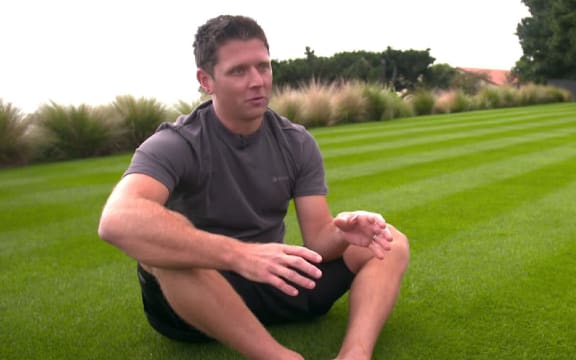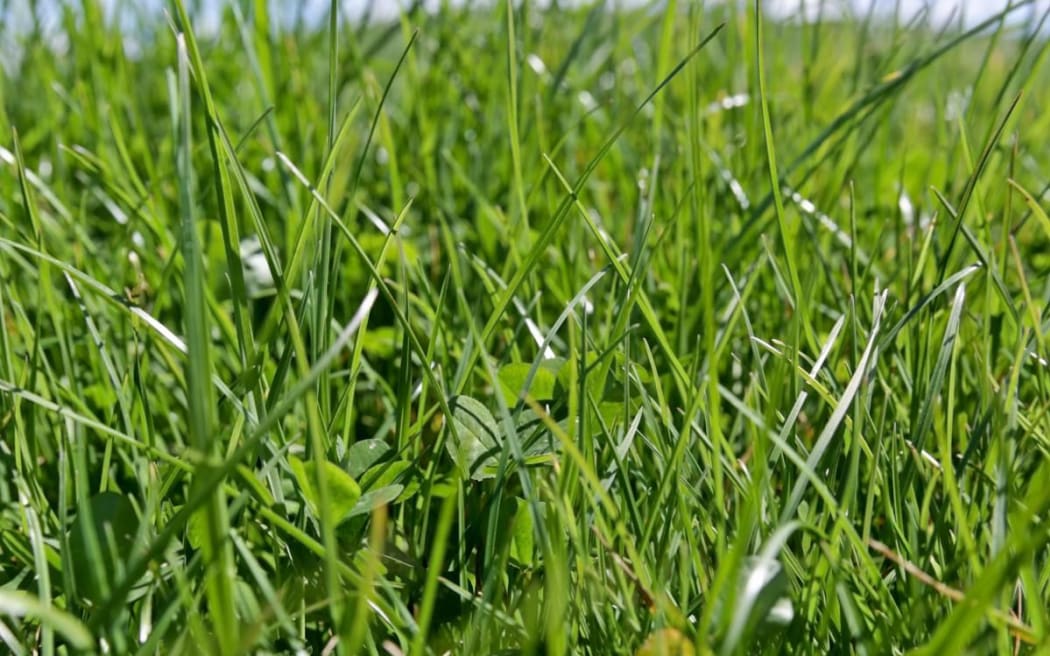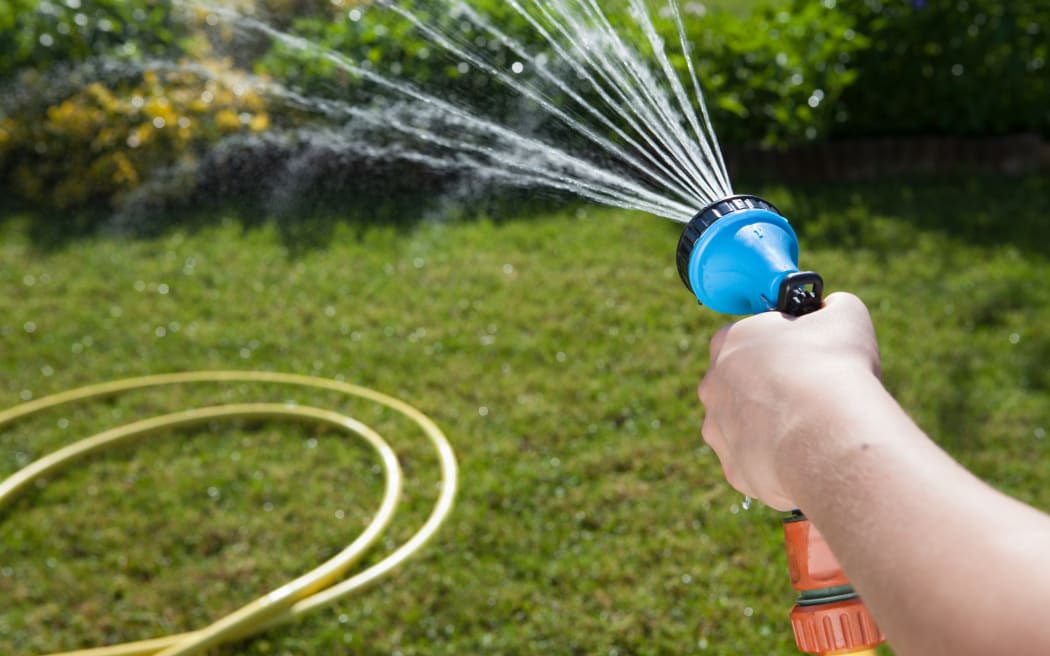
Simon Slade's lawn won 2022’s NZ Home Lawn of the Year. Photo: thatlawnonthehill
Simon Slade loves his lush Mt Pleasant lawn. He loves it so much that it won 2022's NZ Home Lawn of the Year and it even has its own Instagram account.
“Lawnwife” Gieve plays her part in the upkeep too, but it’s mostly Slade’s baby.
He tells Summer Times that his obsession started about six or seven years ago, at a previous property with a small patch of lawn.
He started mowing it and trying to figure out how to make it better, which quickly escalated to spending money on a new mower (“that surprised the wife”) as well as studying ways to make the grass lusher and greener on his side of the fence.
Slade’s lawn regime is punishing; from October until March he’s out there mowing two to three times a week.

Simon Slade in his happy place on his lawn. Photo: YouTube screenshot
“The more you cut it, the sort of better it shows up. People don’t need to get quite that obsessed, but if you can be cutting it twice a week, then that’s great. Again, it depends on the size of your lawn as well.”
Shorter lawns are harder to manage, Slade says, so cutting the lawns longer in summer will help them look better and be more resistant to disease issues.
RNZ listeners tested Slade's expertise with these questions:
How do you control remove or prevent coarse grasses like rye, paspalum and kikuyu grass from spontaneously appearing in your lawn?
One person’s weed or coarse grass is another person’s lawn, Slade says.
“Some people say rye is a pest grass, but our lawns down here [in Twizel] and a lot of lawns down in the South Island are rye grass. Some lawns are kikuyu, some are fescue. So, there are specific products you can use, but it really depends on the makeup of your grass.”
If sowing a lawn from scratch, sticking with a single blend seed will make life easier in the long run, Slade says.
Then, once you know what’s in your lawn, applying a selective herbicide for removing broadleaf weeds like clover and dandelions will remove them without killing off the surrounding grass.

Ryegrass (Lolium perenne) Photo: Public domain
What about moss? How can I treat it without killing the rest of the lawn?
Moss thrives in shady or damp areas, so getting more sunlight on a lawn and checking the drainage is a good first step, Slade says.
“Are any trees or branches that you can either remove or thin out to let more sunlight in?”
Using a garden fork to aerate the lawn will help drain water from the surface.
If planting from scratch, fine fescue is a good choice for a shady lawn.
What are the best lawn barriers or borders?
While he has a concrete mow strip around his home lawn, Slade says a treated timber border can also look great, particularly if planted up with natural grasses.
“It depends on what you’re after. A concrete lawn border is easiest, then you can use something like a line trimmer or an edger to cut that nicely. It does give a great visual appearance if you have that nice clean cut around the edge.”

Watering long and deep early in the day is best for your lawn. Photo: 123RF
What about watering?
Water less, but for longer, and early in the day, to keep your lawn looking lush, Slade says.
“In Christchurch, I can get away there with watering two to three times a week, for like 30-40 minutes.”
Doing it early in the morning, before the sun comes up, is the best time of day to water your lawn, he says.
“A lot of people water late at night, but that opens the risk of diseases and stuff with the water actually sitting on the blades overnight. Less but for longer is better than lots and lots of shorter water.
“There is a wetting agent product that you can put on the lawn that helps you reduce the amount of water needed because it breaks the surface tension of the top layer of soil.”
My dog is ruining my lawn. What can I do?
Slade doesn’t have a dog yet, but if his seven and nine-year-old kids have anything to do with it then there is one in their future.
“I’m going to have to do some training, or sacrifice some of the lawn area,” he says.
“Everything I’ve heard [about] has had mixed results… I think the best thing is training them to not go on the lawn.”

